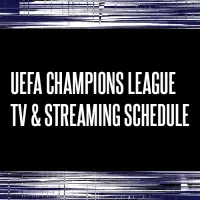NASL’s announcement of an expansion team in Miami beginning in 2016 was met with a wide range of opinions and a certain degree of shock among the American soccer intelligentsia. The new club, Miami FC, which shares the same name of the Miami FC team from 2006-2010 that morphed into the team now known as the Fort Lauderdale Strikers, boasts an impressive ownership group featuring AC Milan legend Paolo Maldini and MP & Silva President Riccardo Silva.
During recent months, NASL has been dominated by expansion rumors (the league that must add teams in the near future to meet the requirements for Division 2 status set out by the US Soccer Federation). But the markets pursued by NASL have either not come to fruition, such as Los Angeles and San Francisco, or have been snapped up first by the third division USL, such as St Louis, Sacramento and Tulsa. Additionally, NASL has announced expansion franchises in Oklahoma City and Virginia whose start of play have been delayed and as of this writing appear unlikely to ever kick a ball.
With NASL’s announcement today of the league’s expansion to Miami beginning in 2016, you have to wonder whether the motivation here is centered around NASL’s never ending quest to get the attention of MLS and the media that covers the top division of North American soccer so closely.
The fact remains that NASL is moving into a market that failed them in the past, using the same Miami FC name for that team, and potentially moving into a stadium (Florida International University) that had attendances of less than 1000 for games, While the new ownership group is impressive, you have to wonder whether this team is doomed to fail given the track record of NASL teams in Miami (both the original NASL and current NASL organizations).
[interaction id=”555d0c81481c375857b95ac1″]
Many Miami fans on social media claim that the city will only embrace “the best,” making any attempt at a lower division team in the market risky. Quite frankly, a MLS team itself in the area is always a risk for this reason as well. Short of having a team completely packed with stars, which is a difficult proposition under MLS rules and without deep-pocketed owners, Miami seems unlikely to embrace a MLS team. Unlike the community-oriented approach of clubs like Orlando City SC, MLS in Miami would have to depend on star power to generate the type of local enthusiasm that most teams in the league now take for granted.
A cannibalized local market is another byproduct of NASL’s move to Miami. The Fort Lauderdale Strikers are currently one of just two NASL clubs without a local TV deal. Now that another NASL club will play in the same market, they are unlikely to secure the type of favorable deal most other clubs in the league enjoy. Additionally, while the majority of Strikers fans come from Broward and Palm Beach counties, a healthy amount of supporters make the short drive up I-95 or the Florida Turnpike for every home game from Miami-Dade County. These fans will now have to choose between two NASL clubs.
While the NASL will have their first genuine derby with the two sides likely playing in stadiums about 25 miles apart, the league’s decision to make Miami it’s 12th club reminds us of the failures elsewhere in trying to secure expansion franchises and of the league’s continued efforts to poke at MLS. But for the NASL, MLS comes with loaded guns to any fight while NASL is just striving to have any weapon of relevance.













